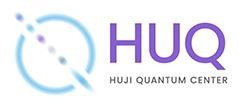The Hebrew University of Jerusalem has a unique ensemble of fine quantum information researchers. Amongst these are researchers with pioneering world renowned work in their respective fields, as is evident through winning highly competitive grants and prestige awards. Here, the members of the center are presented with a description of their current work and references to their quantum information associated publications.





































